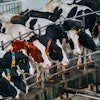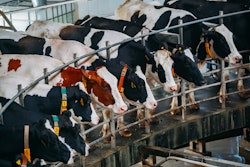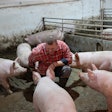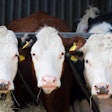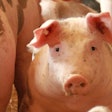
It goes without saying that poultry processing yields need to be maximized, and a small loss per bird, when multiplied by the number of processed over a year, can lead to significant yield reduction.
Understanding why yields may fall below target and implementing strategies to bring them to where they should be, can be challenging, but there are corrective actions that can be taken. There are various processes that can be followed to identify where things might be going wrong that then allow corrective steps to be taken.
Perhaps the first is to believe that solutions can be found, even when staff have become resigned to thinking that all corrective avenues have already been unsuccessfully explored.
Key elements
Do employees at all levels have a mental map of all of the aspects of the business and how they interconnect? If not, then this needs to be created, and subsequently the management tools that may be needed can be put into place.
Do staff know what the company’s critically important goal is? In this instance, it may be to reduce waste and rejects and maximize yield prior to birds entering the prechiller, but this goal should be flexible, and altered, as and where necessary.
Get the basics right
Are staff happy? In any processing plant, workers on the floor and managers alike must believe that their welfare meets, or is above, their expectations.
While keeping staff happy is important across the whole company, an unhappy workforce can have a particular impact on carcass quality during handling and transporting the birds prior to slaughter, and at various stages during the slaughtering process.
Taking good care of employees will make them more likely to perform well and help them to be open to change should change be needed. Are staff provided with the basics that they need, for example a clean and comfortable place to eat?
All employees must understand the anatomy and physiology of the modern broiler. This information should form part of the induction process when individuals are hired, irrespective of the area where they are to work. It is also worth giving staff short refreshers, as and when necessary, and this basic understanding could even be shared with clients.
Mind maps
Staff must clearly understand the relationships that exist between each of the preslaughter stages and the most critical operations during slaughter.
Particularly important are:
- Feed withdrawal – whether too long or too short, how does poor feed withdrawal manifest during processing, and what are the negative impacts on yield and quality?
- What will the effect of poor hanging onto the overhead conveyor be?
- If birds spend too much time on the overhead conveyor and flap their wings, what will the impact be?
- Should birds suffer pre-shock, how will this harm quality and yield?
- How do atmospheric temperature and height above sea level where the birds are reared impact bleed?
Pareto’s Law
Pareto's Law, also known as the 80/20 rule, states that approximately 80% of consequences or outcomes come from 20% of causes. Particular operations or situations, no more than five, that could have the greatest impact on the quality and yield of the processed birds, need to be identified.
Once this list has been drawn up, an order of priority must be established to address each item on the list. Given that preslaughter and processing are sequential, it may be possible to work in more than one area at the same time.
The speed and dedication given to addressing these areas will determine how quickly issues are resolved. This extends to, should it be necessary, ensuring that purchases are quickly approved and that there is no delay in dispatch by suppliers.
Once issues have been identified and addressed, the team must remain alert to ensure that they do not recur and that new ones do not arise. Should problems occur, action must be taken immediately.
It is also worth remembering that ongoing dialogue with those that handle birds or equipment is invaluable. Employees must feel able to speak up when things are going wrong and have the confidence to put forward new ideas both in terms of operational efficiency and cost savings. Managers must inspire confidence in their teams, ensuring their long-term success.
